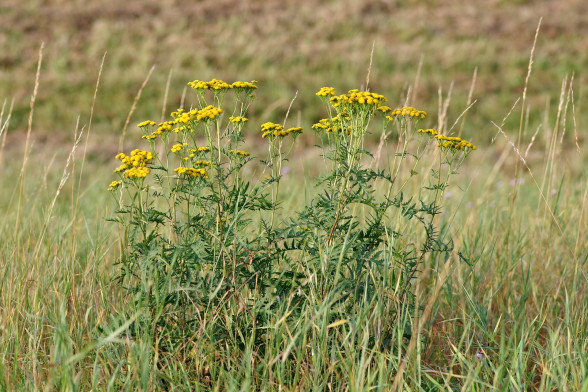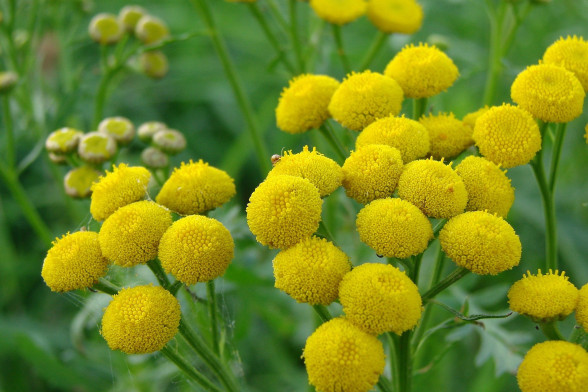
Tansy /Tanacetum vulgare/
Tansy is a poisonous, perennial herb of the aster family, with an upright, 0.4-1.6 m tall, upper part branched stem. The flowers are yellow, button-like, arranged in compound corymbs, which, in turn, form corymbiform inflorescences. It blooms in the second half of summer, from late June to October.
This plant is found throughout Latvia, growing along riverbanks, in dry and slightly moist meadows.
Tansy flowers contain essential oil, with thujone as its main component, along with alkaloids, bitter substances, carotene, vitamin C, and more. The active ingredients of tansy have antiseptic and spasmolytic effects, and thujone specifically acts against threadworms. Due to thujone, this plant is considered poisonous. In folk medicine, tansy flowers are used for treating jaundice, stomach and intestinal disorders, epilepsy, hysteria, edema, headaches, gout, and rheumatism.
From the roots of the plant, a green dye can be obtained, which is used as an insecticide against fleas and flies.
Information sources: www.latvijasdaba.lv, Wikipedia

